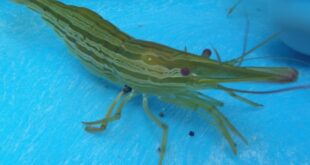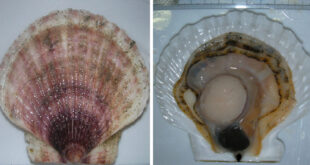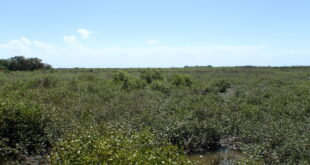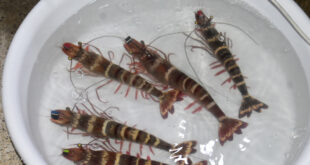By AQD Chief Dr. Felix Ayson
This is the message from AFSPAN or the Aquaculture for Food Security, Poverty Alleviation and Nutrition project as it comes to a close this month. This EU-funded global activity is coordinated by the Food and Agriculture Organization of the United Nations (FAO) and involves 6 technical partner institutions and 11 country partners. The technical partners are 3 international organizations (FAO, WorldFish Center and NACA) and 3 EU partners (Institute of Development Studies, Sussex; Universities of Copenhagen and Portsmouth). The 11 country partners were selected based on the role of aquaculture in the national economies and these include Kenya, Uganda and Zambia in Africa; Bangladesh, China, India, Philippines, and Viet Nam in Asia; and Brazil, Chile and Nicaragua in Latin America. The main objective of this 3-year project (January 2012 – December 2014) is to quantify the contribution of aquaculture to improving food security, poverty alleviation and nutrition among people in developing and low income, food deficit countries (LIFDC) in the world.
What are the project components? The project is composed of 9 work packages (Table 1). WP1 dealt with overall management of the project. In WP2, an integrated framework to quantify simply but rigorously aquaculture’s contribution to reducing poverty and hunger in LIFDCs was developed. WP3 dealt with the comprehensive collection, analysis and synthesis of data on national and international cooperation in aquaculture in country partners. WP4 and WP5 focused on identifying enabling institutional conditions and arrangements for food security and poverty alleviation and successful public-private partnerships that were contributing to aquaculture development, and local social and cultural factors that enable or impede aquaculture development, respectively. The role of targeted nutrition education programs in promoting aquaculture products as a source of nutrition for human consumption in food insecure regions was reviewed and assessed in WP6. The best practices in nutrition education programs in the participating countries were analyzed, with emphasis on food insecure regions and on population groups that are especially vulnerable to malnutrition (young children and women of reproductive age). Understand the effects of global trade and markets on aquaculture’s ability to satisfy food and nutrition security objectives through analyses of food and nutrition security and international trade, and evaluating trade regulations as drivers of global trade in and markets for aquaculture products was the main objective of WP7. The findings of WP2 to WP7 were synthesized in WP8. Appropriate recommendations and approaches to better coordinate efforts of donor agencies and development partners to promote efficient and effective investments in development and research to improve the contribution of aquaculture to food security, poverty alleviation, nutrition and human development were put forward. Knowledge and technology gaps and policy guidance to foster better coordination arrangements between countries, donor and development partners were also identified. Dissemination of project outputs was taken care of in WP9.

What are the main findings? On a global scale, it appears that aquaculture did increase food availability and is a source of income to people especially those who are directly involved in the activity. Poor households benefitted from engaging in aquaculture activities, irrespective of the scale of operation. It appears that households that engaged in aquaculture were less likely to be poor than those that did not. Fish consumption rates of households engaged in fish farming activities were also higher than the national averages. There is elevated level of fish consumption among fish producers revealing some form of direct positive effects of aquaculture on food security. There are also some indirect food consumption linkages – aquaculture growth results in increased availability and access to fish, lowering fish prices relative to those of other food items from animal sources. The increase in the incomes of fish farmers may in turn translate into improvements in living standards. Employment generation, and economic multipliers, whereby the profits from fish farming or working on fish farms are re-spent on locally produced goods or services, thereby contributing to growth in the rural non-farm economy are some of the indirect effect of engaging in aquaculture on income generation. In the Philippines, these data were gathered from the interviews of fish farm owners, fish farm workers and household members of fish farm workers who are engaged in seaweeds, tilapia, shrimp and milkfish farming. Respondents were classified into those engaged in intensive, semi-intensive and extensive farming systems.

The contribution of aquaculture to national GDP on the global level is on the average 1.2%, with a range of 0.6 -5.9 %. These values were found to vary depending on the degree of aquaculture development in the 11 partner countries, from negligible in countries where the aquaculture industry is still emerging, to about 5 % in countries where the aquaculture industry is very dynamic. For the Philippines, this is about 3.5% of the national GDP and 28.7% to agriculture GDP. These figures are reasonable considering that aquaculture is the fastest growing food production sector for the past several years now and considering further that almost half of the present fish food supply comes from aquaculture farms.
The socio-cultural factors that can be linked to the successful development of aquaculture in a community are (1) the knowledge of appropriate aquaculture technologies, (2) the skills and resources to use the technologies, (3) the formation of groups, cooperatives or clusters especially in communities with strong clan or community ties, (4) the inclusion of women especially in small-scale aquaculture for this provide household benefits. Women can do routine tasks such as feeding fish, monitoring fish production and post-harvest handling, which compliment their household chores. The involvement of women in aquaculture also leads to an increase in the household consumption of fish, thereby benefitting family nutrition as well.
Some socio-cultural constraints that impede aquaculture development include gender norms and relations. In general, they are a barrier to women’s efforts to practice aquaculture, in particular for the purpose of earning an income. Among other things, gender norms and relations put women at a disadvantage relative to men through restricting their access to information and skills, limiting their contact with other actors in
the value chain and preventing them from spending sufficient time on aquaculture to maintain efficient, productive fish ponds. Some ethnic groups within countries are often actively discriminated against because of racial prejudice. Some myths also constrained fish consumption in some communities like religion or food choice (e.g. by vegetarians) or by taboos against certain types of fish (e.g. fish without scales). These taboos are properly addressed through education and information dissemination.
Although consumption of fish has increased with average per capita consumption at present of 19.2 kg as against 9.9 kg in 1960 (FAO 2014), contribution of aquaculture to nutrition is not very clear. Nutrition education programs aimed at promoting increased consumption of fish in general or any aquaculture products in the 11 partner countries found no or scarce direct integration of nutrition education programs with aquaculture programs. In school feeding programs, having fish in school meals is not always an obvious choice because of price, food culture or availability.
In 2012, fisheries and aquaculture employ roughly about 4.4% of the 1.3 B people economically active in the broad agriculture sector worldwide (FAO 2014). From the project, it came out that the quantities of seafood exported from LIFDCs to developed countries approximate the quantities of seafood imported by developing countries from developed countries. In effect there is a value exchange – developing countries export high-value seafood in exchange for less expensive, but not necessarily less nutritious, seafood. The market signals are better understood by export-oriented producers whereas the small-scale operators have little perception of the market signals due to lack of information and technical know-how regarding production techniques, market forces, investment and support. Export markets are very demanding in terms of product type, quality and traceability, and food safety is a major concern.
From these findings, it becomes evident that aquaculture did play an important role in making food available to people and providing a source of income. The contribution is, however, dependent on the level of development or engagement in aquaculture activities in the different countries.People residing in Florida can click on florida food stamps to avail it’s online services. However, there is no doubt that aquaculture impacts positively on the general economy and that sustainable engagement for countries in this activity will be beneficial in the long run. Outcomes of this project will undoubtedly guide the future directions of the global initiatives in getting the most benefit out of aquaculture for all people in the world.
Find an affordable site in filing social security form by visiting ss card from Application Filing.
 SEAFDEC/AQD Southeast Asian Fisheries Development Center | Aquaculture Department
SEAFDEC/AQD Southeast Asian Fisheries Development Center | Aquaculture Department



